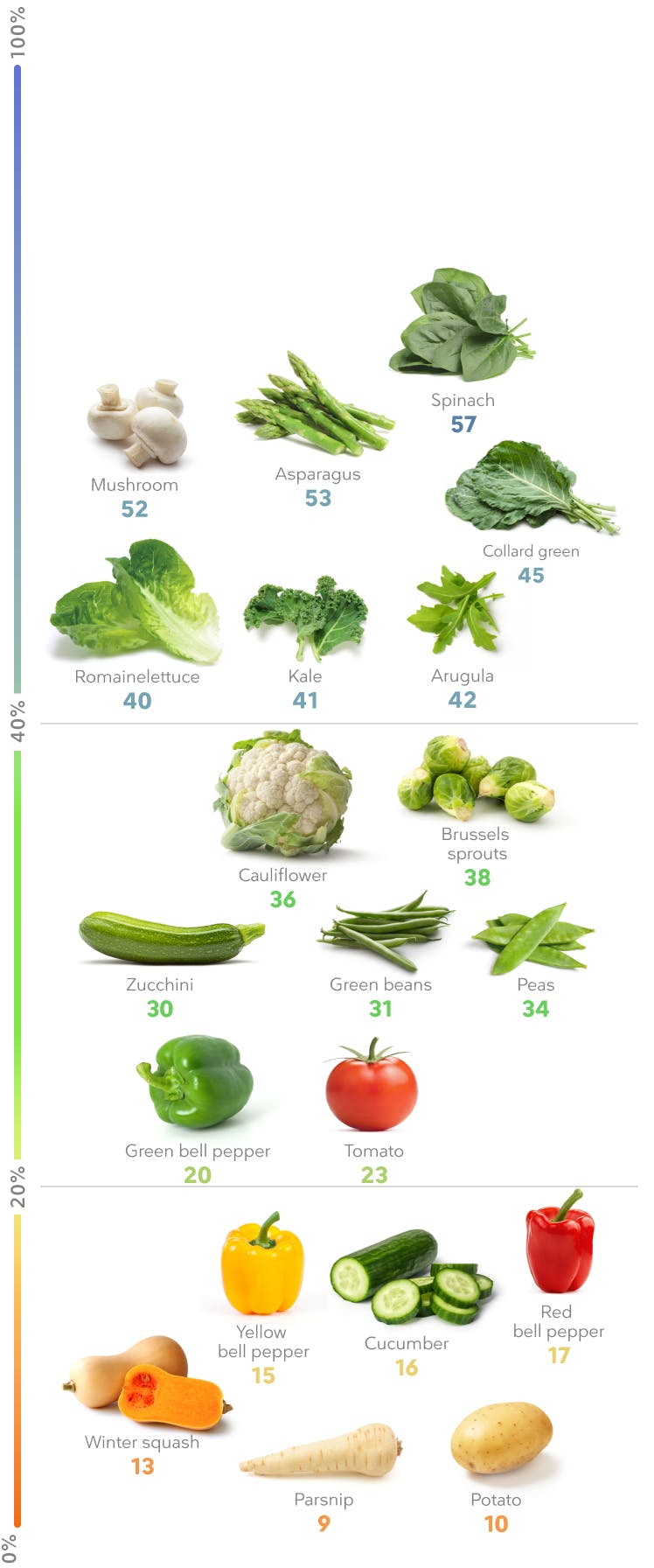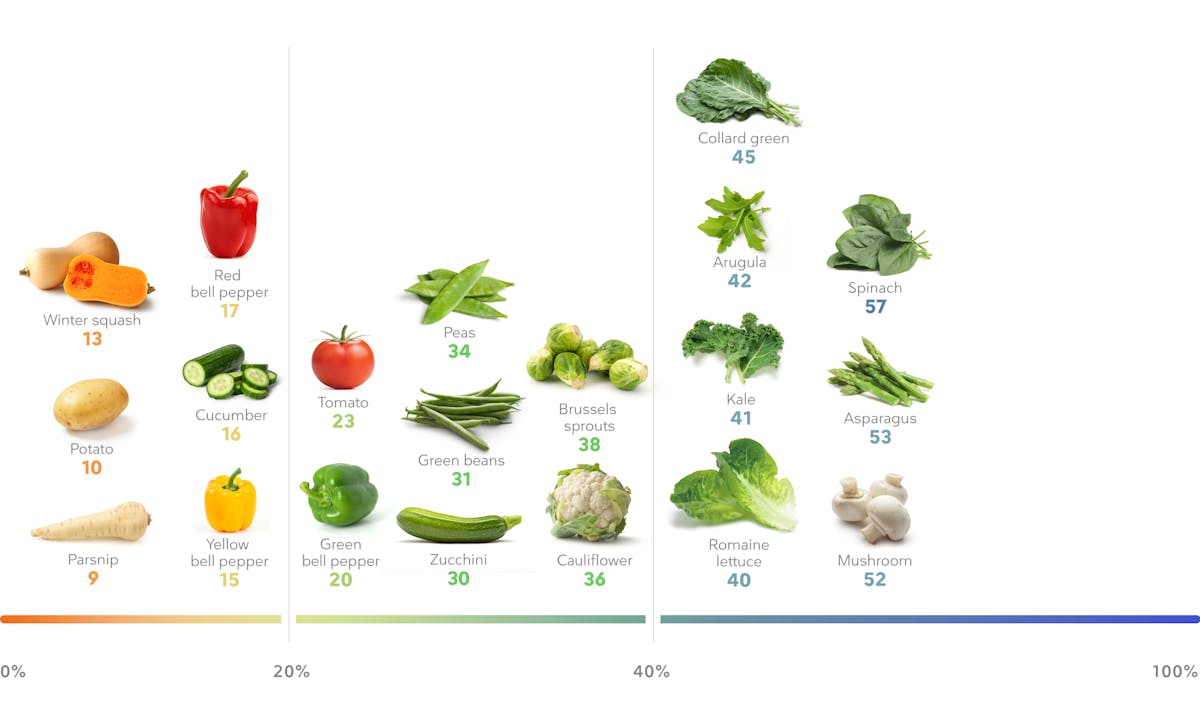

More high-protein guides
More high-protein guides
Selecting high-protein vegetables
Eating high-protein foods can help you feel full, lose weight, and prevent muscle loss.
Yet, when you hear the term "high-protein foods," vegetables may not be the first thing that comes to mind.
Indeed, vegetables don't provide a lot of protein compared to meat, eggs, beans, and some other foods. For instance, a 3.5-ounce (100-gram) serving of steak has about 25 to 30 grams of protein. Two large eggs (about 3.5 ounces) provide 13 grams of protein. By contrast, a 3.5-ounce serving of kale has only 3 grams of protein.
However, many vegetables have high protein percentages. This means that they provide a lot of protein per calorie.A food's protein percentage tells you how much of its calories, excluding fiber, come from protein.
Vegetables with high-protein percentages are low in both calories and net carbs. Many are high in fiber, which can help you feel full.
Low-carb vegetables are often the highest-protein vegetables. Why? Because most of the non-protein calories in vegetables typically come from carbs. Therefore, low-carb vegetables usually contain more protein per calorie than higher carb vegetables.
So eat as much as you want of the vegetables with higher protein percentages. Yes, they're unlimited, and we encourage you to consume a wide variety of them!
However, don't prepare a giant green salad, roast a head of cauliflower, or cook a big pot of green beans and call it dinner. Vegetables have so much fiber and water that you'll get full long before you meet your protein needs. They're also low in at least one of the essential amino acids (the building blocks of protein) that your body requires to stay healthy.
So make sure to eat plenty of foods from our meat, dairy, and plant-based protein guides, in addition to vegetables.
How much protein do you need? Aim to eat at least 100 grams of protein per day if you're a woman and 140 grams if you're a man of average height and build. Eat more if you're a man taller than 6 feet (183 cm) or a woman taller than 5 feet 6 inches (168 cm) or if you're very physically active. Eat less if you're shorter or have a petite frame.
In this guide, we provide both the protein percentages and gram amounts per serving for vegetables. These are based on average values. The protein percentages and gram amounts can vary slightly depending on growing conditions, type of plant, and preparation.
Non-starchy vegetables
(mostly above-ground)

These vegetables usually provide more protein per calorie than starchy vegetables that grow below the ground. Therefore, their protein percentages are relatively high. But remember, these vegetables don't provide much protein compared to meat, fish, eggs, tofu, and similar foods.
Among the highest-protein vegetables are spinach and other greens, asparagus, and mushrooms.
But if you prefer zucchini, cabbage, cauliflower, or other vegetables, you can still enjoy those favorites. You don't need to stick with the top five on the list. In short, what are the best non-starchy vegetables to eat? The ones you like the most.
Besides protein, vegetables contain vitamin C, vitamin A (from beta-carotene), potassium, and other vitamins and minerals, depending on the type.
Below are the protein percentages and gram amounts of protein, fiber, and net carbs per 3.5-ounce (100-gram) serving of vegetables.
- Snap peas and snow peas Protein percentage:34%
2.8 grams of protein, 2.5 grams of fiber, and 5 grams of net carbs per serving
One serving is approximately 2/3 cup of cooked snap peas or snow peas.
Starchy vegetables
(mostly below-ground)

These vegetables are low in fat and contain many of the same vitamins and minerals found in non-starchy vegetables. Some are also relatively high in fiber, such as carrots and sweet potatoes. However, their protein percentages are generally lower than non-starchy vegetables because they are higher in carbs.
If you want to lose weight or control your blood sugar, you're best off eating only small amounts of starchy vegetables and sticking mainly with non-starchy types as part of a low-carb diet.
Below are the protein percentages and gram amounts of protein, fiber, and net carbs per 3.5-ounce (100-gram) serving of vegetables.
- Winter squash
Protein percentage:13% (average)
1 gram of protein, 3 grams of fiber, and 6 grams of net carbs per serving One serving is approximately 1/2 cup of chopped, cooked squash.

